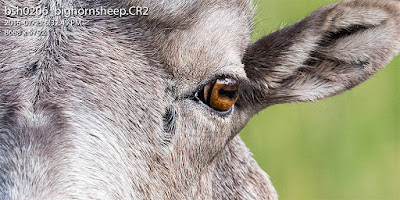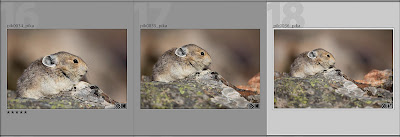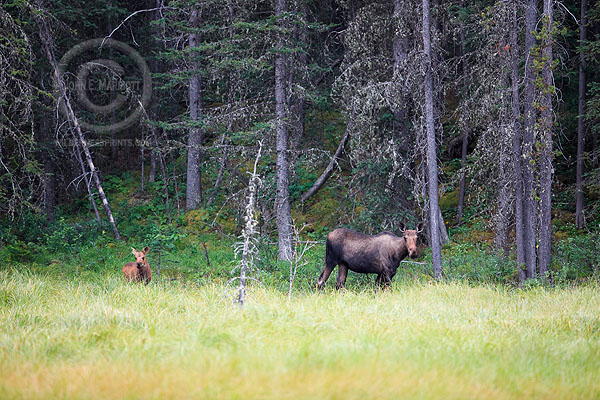Review of the Canon 5DS R Camera Body
When Canon Canada’s Alberta rep Brad Allen called me up last Friday and said, “Want to test out the new Canon 5DsR body next week?” my answer was short and sweet and may have sounded something like, “Yes, please,” though with a little squeal of glee attached.
The next best thing to getting free gear is of course getting to test out new gear hot off the presses, and while I hadn’t necessarily planned on buying the new body, an opportunity to test it out to see if it was a worthwhile purchase for a wildlife and nature photographer like myself was something I jumped at. Plus, I figured, what better way to be able to tell all of my workshop and tour clientele that they NEED to get out and buy the latest and greatest from Canon (or vice versa, that they don’t need to and can instead use that money to go on their 53rd trip with me).
Canon announced this splashy new 50.6 Megapixel camera body (there are actually two camera bodies, the 5DS and the 5DS R) as the “world’s highest resolution full-frame camera” back in February, and the initial reviews have been favourable (my favourite in-depth review of the new camera bodies is over on the The Digital Picture by Bryan Carnathan).
 |
| The 50.6 MP Canon 5DS R camera body |
So let’s cut to the chase. I got the 5DS R body (identical to the 5DS body except that the low pass filter effect is cancelled on the R body, which when translated to normal english means that it’s slightly sharper but may have some funky patterns going on in the background from time to time) on Tuesday of this week and promptly raced down to Kananaskis Country to see what I could find that a) was breathing, b) was moving, and c) was not human.
My entire goal, much like my review of the Canon super telephoto lenses back in December 2012 (the 400 vs the 600 and why I chose the 500 over the 400/600), was not to go into great technical detail about the camera body, but simply to test it and see if I liked it for real world photography. Is it sharp? Is it functional? Will it make me a better wildlife photographer? Can I see it also being useful in my landscape photography or for northern lights work? Would I ditch one of my beloved Canon 5D III workhorses for a 5DS R? And was this the trip into K-Country that would finally reveal the Yeti that I long suspected slept in the bathrooms at Highwood Pass after hours? Almost all valid questions that I wanted answers for….
So in case you don’t really care about seeing the images and just want to know if you should go drop $4,300 Canadian on a spanky new 5DS R, my final findings can be summed up as such: Will this camera make you a better wildlife photographer? No, it will not. Would it be a useful tool in a photography kit for a wildlife photographer? Absolutely. Would it be a useful tool in a photography kit of a landscape photographer? Even more absolutely.
Straight out of the box and into my hands, the 5DS R is basically the 5D III with a different name on it. It feels the same, looks the same, and has similar menus and controls. It took me all of three minutes to customize this model to the specifications I wanted (for instance, I always change the Depth-of-Field Preview button so that it becomes a toggle between AI Servo and One Shot AF mode…that way I can be shooting in One Shot mode and if the animal starts moving, I hold down the Depth-of-Field Preview button and I’m instantly shooting in AI Servo mode tracking the movement of the beast — this mimics what back button focusing accomplishes, which is good since I was never able to train myself to do back button focusing).
There were two things I was really impressed with off the bat with the 5DS R (besides drooling over the thought of blowing up a 50.6 MP wolf shot to the size of a small house and still having it be tack sharp): one, the redesigned shutter/mirror is super quiet even in regular 5 fps mode (1 less fps than the 5D III), which is a phenomenal improvement for wildlife photographers like me that hate those machine-gun clackings of bodies like the 1DX and the Nikon D4s. It’s substantially quieter than even the 5D III in regular high-speed drive mode.
And two, the in-camera crop feature is one of the sexiest things I’ve ever seen in a camera. The ability to flick a menu ‘switch’ on the fly and move between full-frame (50.6 MP), 1.3x crop (30.5 MP) and 1.6x crop (19.6 MP) is addictive, ridiculously fun, and extremely useful for wildlife photography purposes. It’s basically like having a 50 MP landscape body with a 7D II built into it (the 5DS R has the same AF system as the 7D II — which is fantastic for wildlife shooters), since the 1.6x crop leaves you with the exact same size file as you’d get out of a 7D II.
So what does 50.6 MP look like when you first pull an image up on screen? If it’s a sharp image (more about that later), then it looks out-of-this-world good.
 |
| A bighorn sheep ram in Kananaskis Country shot handheld ISO 640, 1/1250th at f5.6 with the Canon 5DS R |
 |
| Click on the eyeball above to see a full 100% crop of this |
Because of the size of the sensor, you do have to be cognizant of the fact that movement in wildlife photography gets amplified even more than it normally does, so I was already aware that getting sharp images with the 5DS R was going to require slightly higher shutter speeds and real attention to proper lens technique. But with that said, I still didn’t really have an issue handholding my 500mm down to 1/500th of a second with the 5DS R, which is pretty close to what I handhold it at with my 5D III (I can get sharp shots down to about 1/320th sometimes handholding the 5D III).
As I believe I mentioned above, the in-camera crop factor is absolutely spectacular. Check out these two samples of what you can do in-camera, moving from full-frame to 1.3x crop to 1.6x crop all within a few seconds (click on the photos to see larger versions).
 |
| Full frame to 1.3x to 1.6x (click to enlarge) |
 |
| 1.6x to 1.3x to full frame (click to enlarge) |
 |
| My original shot of a pika, shot in 1.6x crop mode |
 |
| The crop and full frame file in Lightroom, so I can now adjust my crop if I want to |
 |
| The final crop, adjusted slightly so the pika is now dead center of the frame |
 |
| I un-cropped this shot a bit, because I found it too tight and not quite sharp enough as I had composed it originally |
 |
| Full frame moose at 50.6 MP, 100% view, not the noise and lack of sharpness (click to enlarge) |
 |
| Downsized moose with noise reduction, 100% view, note increased clarity and sharpness (click to enlarge) |
 |
| The final image, which would print well from 12″x18″ up to 24″x36″ — 1/400th at f4, ISO 2500 — 5DS R and 500mm |
Overall, I was much more impressed with the Canon 5DS R camera body than I thought I would be. It’s AF performance was fantastic, the files are absolutely unbelievable, and the ISO performance was only a step below the 5D III and a step above the 7D II. At 5 fps, it’s still fast enough for wildlife photography, and I think anyone selling a lot of prints and/or looking to get into the high-end fine art wildlife print market should absolutely be picking one of these camera bodies up for their own kit.
Likewise, while I haven’t had a chance to use the body for landscapes yet (I’m hoping Canon Canada will loan me one for my two back-to-back landscape photography workshops in the Bugaboos in early August so I can test it out some more — any of you wanna-be nature photographers looking for something to do the week after next, the wildflowers are CRAZY this summer in the Bugs and we still have a few spots left in one of the workshops!), I can already see where the 5DS R would be a phenomenal landscape camera on par with many medium format cameras already out there.
 |
| Handheld with 500mm and Canon 5DS R at 1/1250th f5.6, ISO 640 |
Let me know if you thought this review was helpful or not in the Comments section below. Thanks everyone.

Anonymous
July 24, 2015 at 10:04 pmYes! Great review!
Bob Paulson
July 26, 2015 at 12:58 amIntriguing review. I had not looked at this MAMMOTH before. SO many pixels. Sure beats my Canon 6D. I love how sharp it is and would love to have my best shots be able to blow up to the size the 5DS R would allow. Thanks for the review.
Mac McMillen
July 28, 2015 at 4:51 amVery interesting and informative review. Even though I'm a Nikon shooter, I still found it interesting, particularly the fact that the in-camera crops still give you the full file. Thanks.
Rob Wiebe
July 28, 2015 at 10:52 pmLoving my 5DS R and I share much of your perspective. Will be testing it on landscapes shortly in Jasper. 😉
Ryan V
July 28, 2015 at 10:53 pmThanks John, this was the type of review and key points I was looking for, practical and covered what i was interested in and wanting to know rather than all the technical and studio reviews out there.
Manel Dias
August 1, 2015 at 8:26 pmI always Truly Enjoy reading this pages. You are doing a wonderful service to protect and to make people aware of the TRUE scenario of the wilderness & it's inhabitants. Then again, yes , this senseless Murder of CECIL by the ruthless man named Walter Palmer has made the world go fuming and outrageous. When I learned that this poor Cecil had been gruesomely Cross bowed & left him to suffer over 40 hours I just had the goose bumps tears jumped from my eyes. OMG I hope this Barbaric man should suffer the Hell on earth. Mind you this is NOT the 1st time this moron had lied about murdering illegally such large wild animals. He had murdered a Black Bear & had lied to the US Wild Life Authorities in 2006. I have no words to express my anger towards this evil scumbag. All I can do is now to pray for the beautiful voiceless animal who did not have a chance to escape from this perpetrator. Where ever Cecil may be HE SHOULD BE WELL & HAPPY, & MAY HE ATTAIN NIRVANA. REST IN PEACE SWEET SOUL. You made so many people Happy with your Beauty and Majesty & the world will miss you for ever!!!
Anonymous
September 29, 2015 at 2:15 pmI've owned the 5Ds since June. Whilst you can get remarkable shots if the light is perfect, I live in the UK so that is rare, I have found that at higher ISO the shots are at best fair. Anything over about ISO 400 you will need either a tripod or flash….. this is 21st technology with pinhole camera constraints!!! I believe the 5Ds has approx 20mp over the nearest Nikon but in my opinion all the extra pixels do is collect noise. Canon would have been better of with a lower pixel count and concentrating on less noise anda better dynamic range.